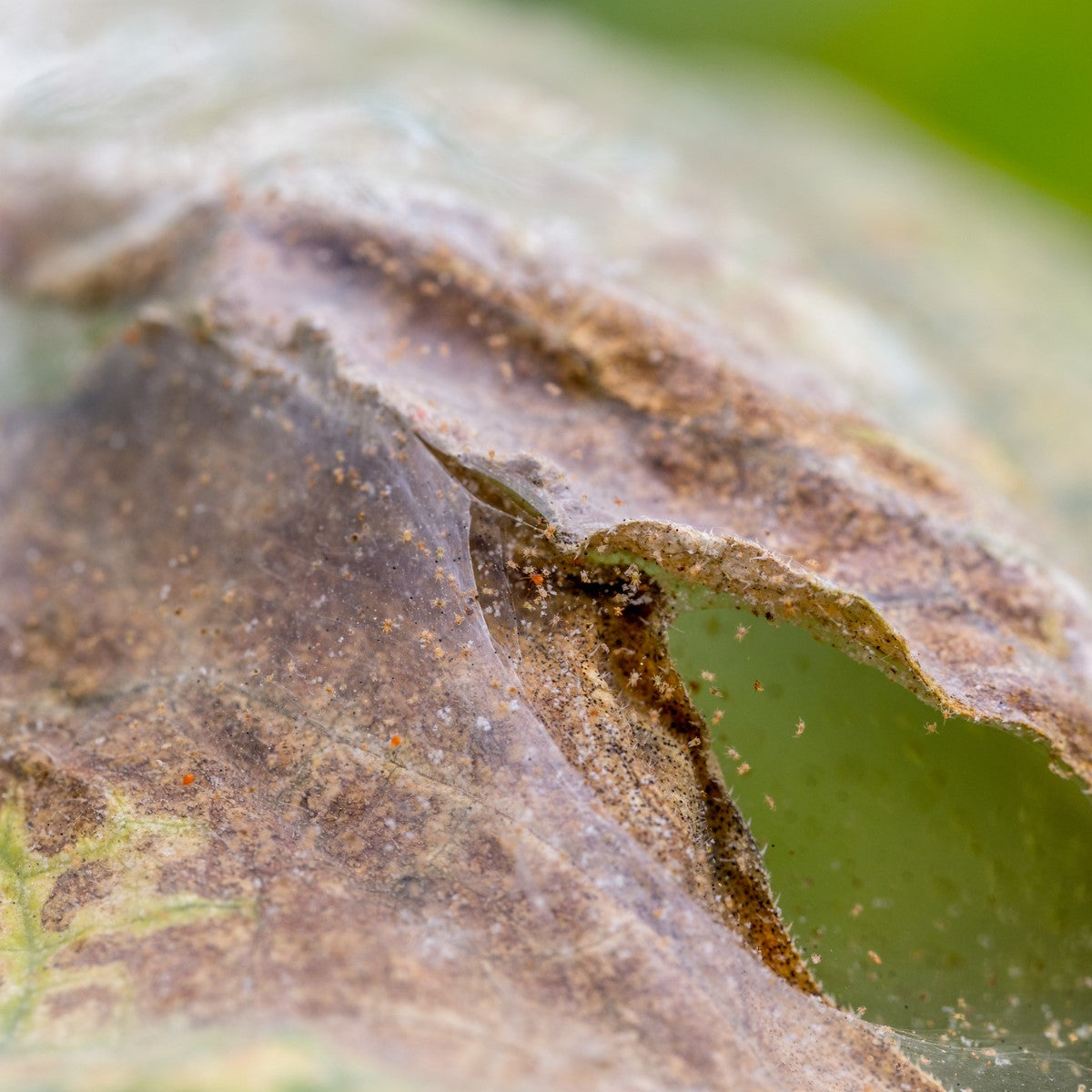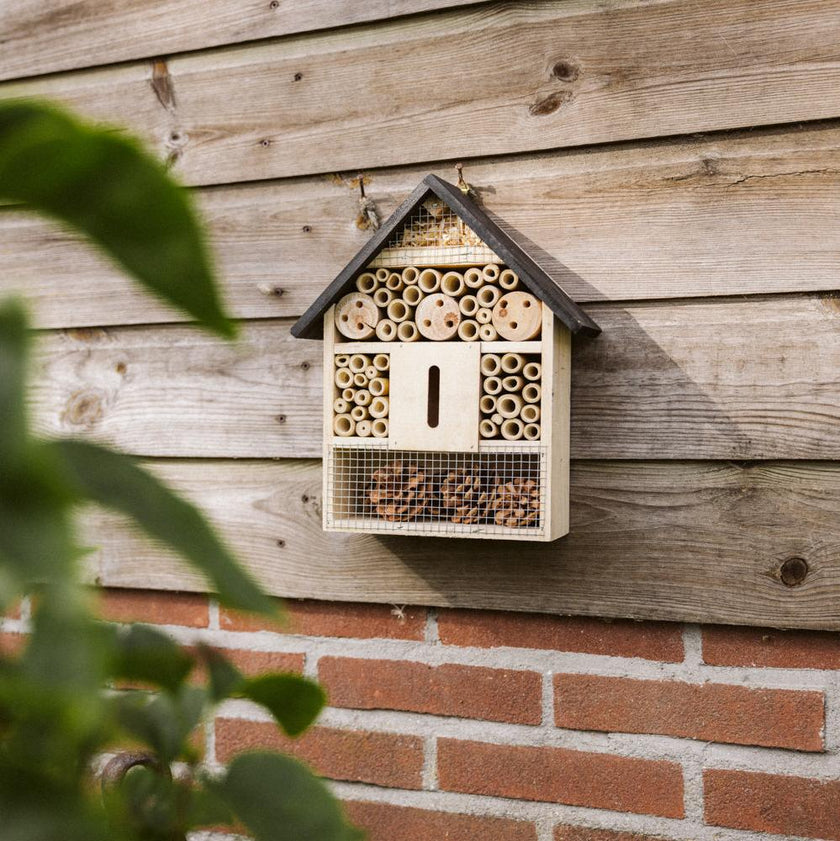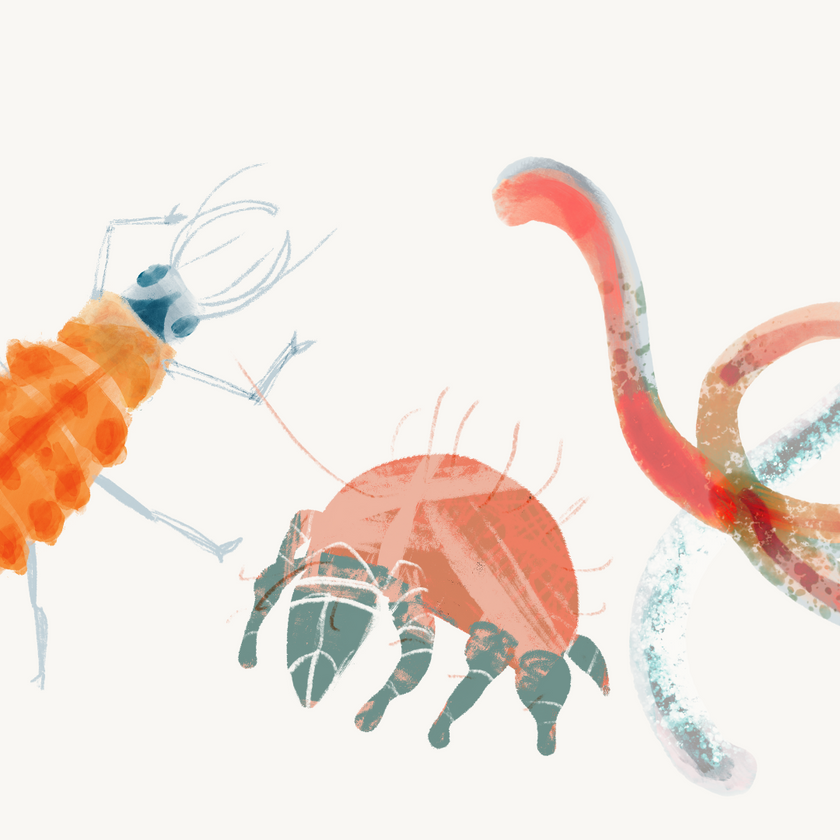
While most people are afraid of spiders, plants are mainly afraid of the spider's distant cousin: spider mites. Like a spider, it is often mistaken for an insect, when it is actually an arachnid. But perhaps more importantly: How can you recognize and combat spider mites? Read on quick!
Recognizing spider mites
Spider mites are most active in warm and dry weather. The small creatures up to 0.5 mm in size enjoy the plant cells and consume the 'plant drink' until the dead plant cell turns yellow. That's nice for spider mites, but less nice for your plant. Extracting plant sap causes reduced growth of the plant.

If you notice yellow spots on the leaves, it is wise to look at the underside of the leaf. You will then see small balls walking with 8 legs. The color can vary between red and green. The greenhouse spider mite (the most common spider mite species) can be recognized by two dark spots on the body that you can only see with a magnifying glass.

Heroes to the rescue
Discovered spider mites? Then it is time to take action because spider mites multiply very quickly. In an advanced stage, the creatures make spiders, small webs, between the leaves. The mites use the small webs to move more quickly from one leaf to another.
Spider mites can be combated with two different types of predatory mites. For preventive control or in case of a light infection, you can hang Insect Hero Nicus in the plant. Nicus is supplied in a special grow bag, which protects your plant against spider mites for several weeks.
If the spider mite plague has already reached serious proportions, it is time for Insect Hero Persi. Like Nicus, Persi is the natural enemy of spider mites. Persi eats up to 5 adult spider mites, 20 young spider mites or 20 spider mite eggs per day. Overpowering the spider mite plague is a piece of cake for Persi because in two days Persi doubles in number!
Want to know more about how to recognize or combat spider mites? See our extensive page about spider mites .
Or get started right away with the Heroes? Then click through to: Predatory mites against spider mites – Insect Heroes

















































